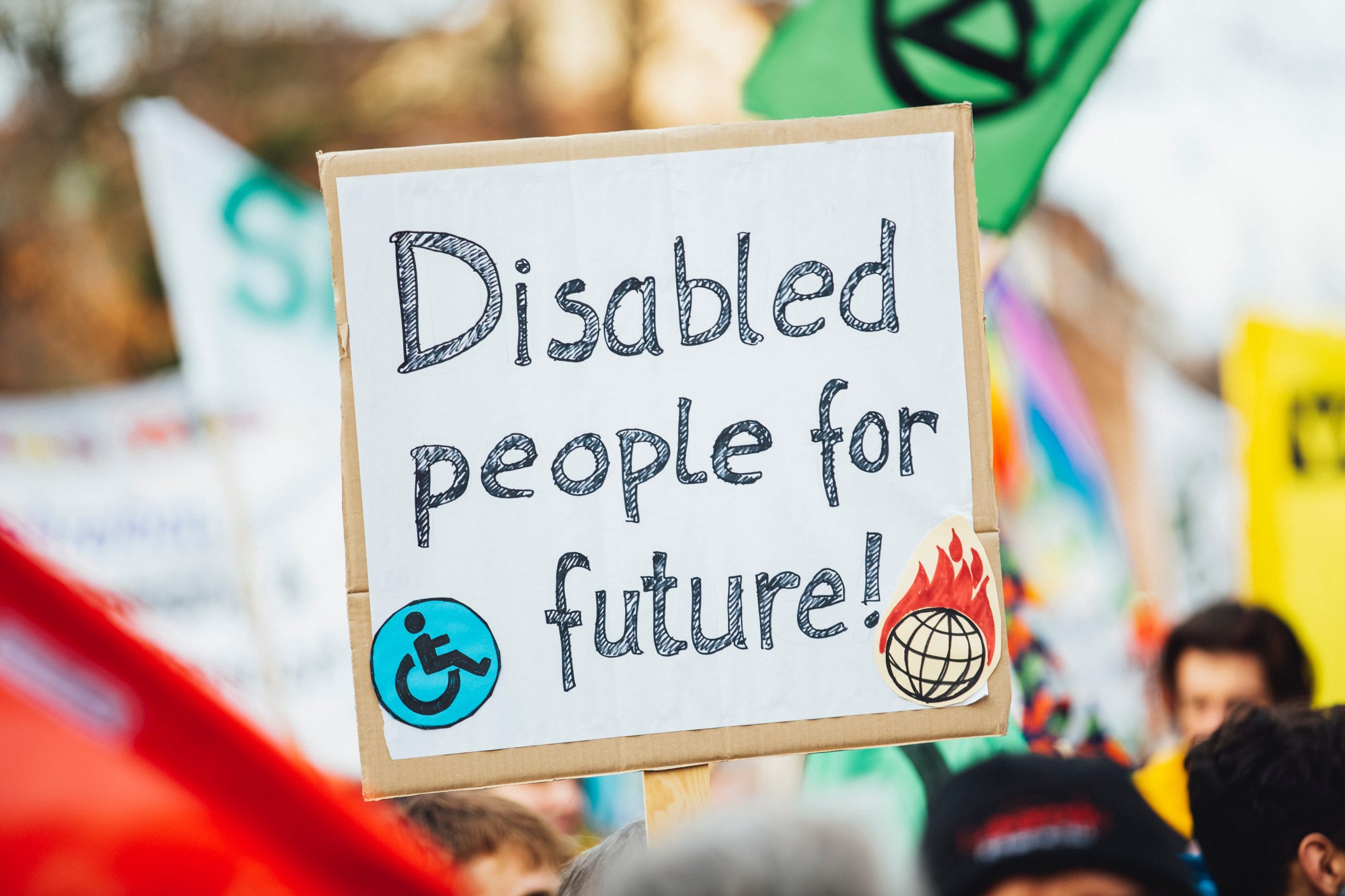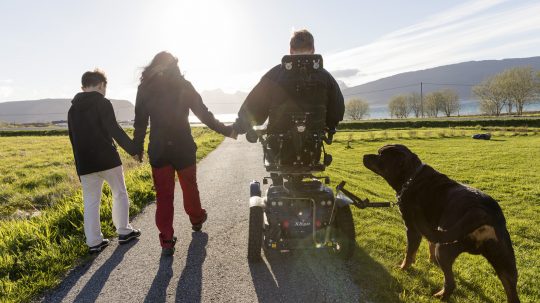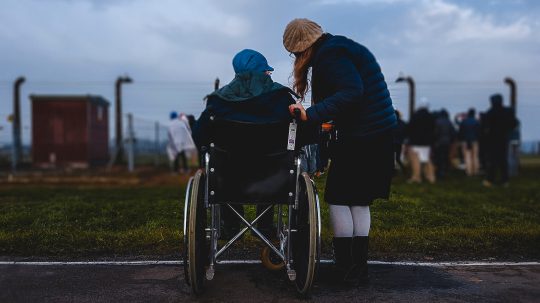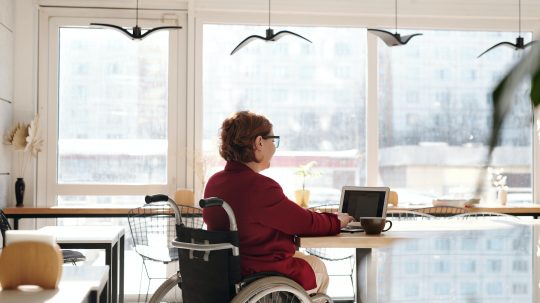In July, the UK government released its National Disability Strategy, which included proposals aimed at removing barriers to participation in public life, increasing public awareness of disability, and improving access to legal support. However, it was met with swift criticism for what it omitted.
The initial consultation survey, distributed to inform the strategy’s focus, also led to criticism because of a question it posed asking if people would be “happy to have a physical relationship with a disabled person”.
Critics argue that a key issue impacting the human rights of disabled people was excluded from the strategy – food poverty, which disproportionately impacts disabled people. According to the Trussell Trust, 62% of people of working age referred to food banks in early 2020 were disabled. The omission of food poverty from the strategy could even pose a threat to Article 2 of the Human Rights Act, which enshrines the right to life.
What is the National Disability Strategy?

Credit: Sharon Mccutcheon / Unsplash
The government strategy focuses on improving the lives of disabled people in the UK. With one in five people having a disability – translating to roughly 14.1 million disabled people in the UK – the government hopes the strategy will improve awareness of the community, and improve the lives of disabled people.
Combining the input of more than 14,000 disabled people, disability organisations, businesses and policy experts, the strategy is split into three parts. The first section sets out immediate commitments to improving every aspect of a disabled person’s day, such as improving understanding of disability among the non-disabled population and adjusting the law to allow for deaf people who need a British Sign Language interpreter to serve on juries.
The second section outlines the changes to how the government will work with and for disabled people in the future. This section focuses on five aims: ensuring fairness and equality; considering disability from the start of any process; supporting independent living; increasing participation of disabled people in development and delivery of services and policies; and delivering joined-up responses “across organisational boundaries” to “better understand and respond to complex issues that affect disabled people”.
The third section summarises the actions each government department will take, including “ministerial champions setting out their personal commitment to the strategy”.
What are the proposals and why were they criticised?
The proposals in the strategy include amalgamating the Personal Independence Payment into Universal Credit, giving the Department for Work and Pensions the legal power to look at bank accounts of claimants, increasing disability-related assessments, and more.
Backed with £1.6 billion of funding, the strategy aims to improve inclusion in the workplace by tackling the disability employment gap, which remains at 28.6%. It also covers introducing workforce reporting for businesses with over 250 staff on the number of disabled people and launching an online advice hub for disabled people and employers.
“For the first time, we have real cross-government focus, with clearly set out priorities and aims,” said the minister for disabled people, health and work Justin Tomlinson. “We are absolutely committed to putting disabled people at the heart of government policy making and service delivery. Their voices, insights and experiences are central to this strategy and our future approach.”
Critics add that the strategy is mostly made up of existing commitments and policies currently working their way through parliament
With nearly half of respondents to the initial consultation survey reporting having at least “some difficulty” getting in and out of where they live, the strategy included proposals to tackle this particular inequality. The strategy will raise the accessibility requirements for new homes and adapt existing ones using the £573 million Disabled Facilities Grant.

Credit: Markus Spiske / Unsplash
However, when the strategy was published, some accused the government of rehashing old plans, particularly in relation to its “new” promises around housing, including a boost in the supply of accessible housing. The Chronically Sick and Disabled Persons Act of 1970 already outlines the responsibility of those building housing to “have regard to the special needs of chronically sick or disabled persons”. But these properties are being made accessible at a glacial rate – with homes in England with key accessible features taking nearly ten years to grow from 5% to 9% between 2009 and 2018.
Critics argue that the strategy is mostly made up of existing commitments and policies currently working their way through parliament, like the adjustments to allow for deaf jurors (already a minor part of the new Policing, Crime, Sentencing and Courts Bill).
The National Disability Strategy was the chance to redress the balance created by the pandemic and decade of austerity, but I don’t think the government had any plans to do that
Closer analysis of the document by Disability News Service also showed that most of the £1.6 billion funding promised was already announced or allocated last year.
“Close inspection of the National Disability Strategy confirms what we already knew – that this so-called strategy is really nothing more than a cynical re-packaging of current policies and current budgets, all of which have failed to get our rights and equality back on track,” said Tracey Lazard, chief executive of deaf advocacy charity Inclusion London. “The fact that there appears to be pledges of just £4.13 million in new funding for a frankly random and non-strategic selection of activities says it all.”
How does food poverty affect disabled people?

Credit: Waldemar Brandt / Unsplash
Crucially, the strategy seems to have forgotten to tackle one key issue disproportionately affecting disabled people – food poverty.
“Disabled people are disproportionately affected by food poverty,” said Rachel Charlton-Dailey, a freelance writer and editor of The Unwritten, a publication written by and for disabled people. “Not only does our money go less far but we’re more likely to be unemployed so need to rely on benefits. Disabled people already receive such a paltry amount on disability benefits that the decision to consolidate all benefits onto Universal Credit was one that deeply upset disability activists like myself. We could see how little value was being placed on poor people and how much this was going to push them into food banks.”
In February, the Environment, Food and Rural Affairs Select Committee heard evidence exploring issues relating to food accessibility. According to Anna Taylor of the Food Foundation, levels of food insecurity are 12% higher for households with a disabled person, and pre-pandemic the difference had only been 6%.
“The pandemic has shown that the government doesn’t care about disabled people and this just further proves it. I’m honestly sickened by this,” continued Charlton-Dailey. “The National Disability Strategy was the chance to redress the balance created by the pandemic and decade of austerity, but I don’t think the government had any plans to do that.”
There is concern that food poverty will only worsen as the uplift to Universal Credit is cut, with experts suggesting that a significant amount of those receiving the benefit will experience food poverty as a result.
Without a strategy that safeguards their rights, food poverty is in danger of overwhelming parts of the disabled community.






